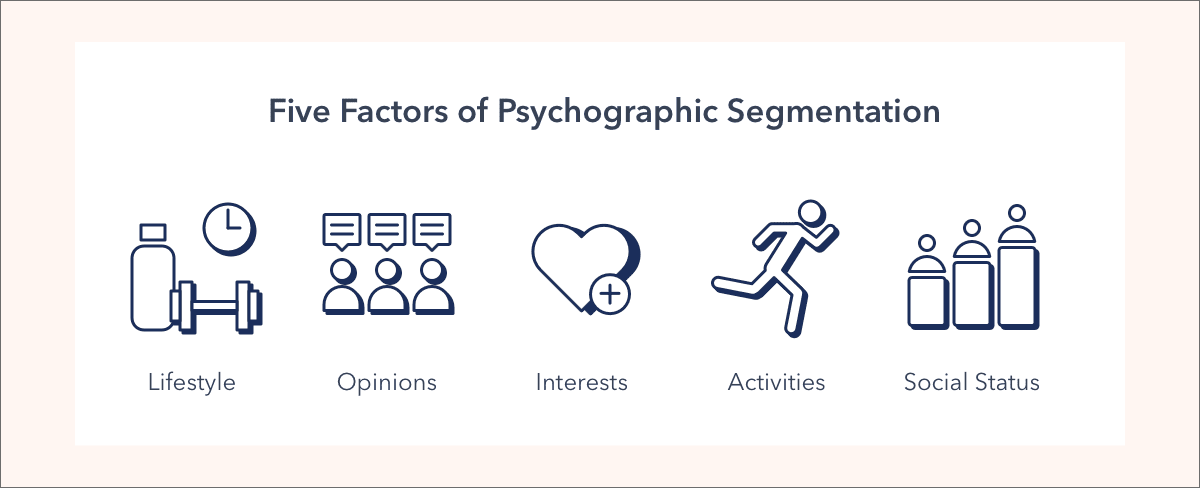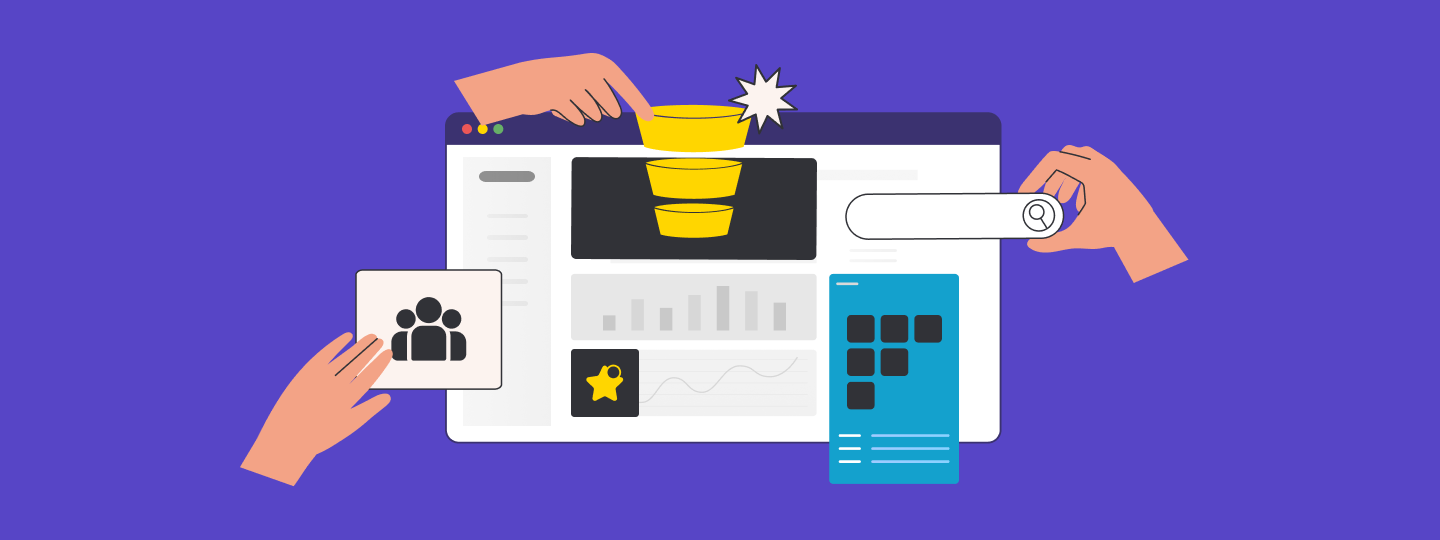Introduction:
Demographics can only take you so far — they tell you who your customers are but not why they make the decisions they do. Understanding your customers on a deeper, more emotional level sets successful brands apart from the competition.
This is where psychographic segmentation steps in, offering valuable insights into the beliefs, values, and motivations that influence purchasing behavior.

In fact, 71% of customers are more likely to recommend a brand based on an emotional connection to it. However, only 4% of marketers use multiple types of data for segmentation, while 42% don’t segment their audience at all. With 80% of companies that use market segmentation reporting increased sales, the potential for psychographic insights is clear.
But What is Psychographic Segmentation Exactly?
At its core, psychographic market segmentation is a marketing technique that categorizes consumers based on their psychological characteristics. These can include their lifestyles, interests, opinions, values, and attitudes. It differs from demographic or geographic segmentation, which looks at more tangible traits like age, income, or location. The average company uses 3.5 different segmentation criteria, with demographics, psychographics, and behavior being the most common.
For instance, while two people may fall into the same age group and income bracket, their attitudes toward sustainability or luxury products could be entirely different. Psychographic segmentation in marketing helps brands better understand these differences and craft campaigns that resonate more personally with consumers.
Psychographic segmentation in marketing helps brands better understand these differences and craft campaigns that resonate more personally with consumers.
Why is Psychographic Segmentation Important for Marketers?
Understanding consumer psychographics can significantly enhance your marketing efforts. Here’s why:
- Enhanced Targeting: By understanding your audience’s values and motivations, you can tailor your messaging to resonate with their core beliefs.
- Improved Engagement: Consumers are more likely to engage with brands that connect with their lifestyles and preferences, fostering trust and loyalty.
- Customer Retention: Brands that align with their customers’ values can create stronger emotional bonds, which leads to higher customer retention.
- Cost-Effective Marketing: Narrowing your focus on specific consumer segments helps reduce marketing waste and enhances campaign efficiency.
Additionally, 80% of audiences tend to do business with a brand that personalizes their experience. Thus, segmenting your audience and tailoring your marketing messages accordingly is no longer a luxury, but a necessity.
How Can Marketers Implement Psychographic Segmentation?

Here are a few actionable steps to effectively incorporate psychological segmentation into your marketing strategy:
- Conduct Customer Surveys: Surveys are a goldmine for gathering data on psychographic factors like consumer values, interests, and opinions. Ask questions that delve into their preferences, habits, and motivations.
- Use Behavioral Data: Analyze purchase history, browsing behavior, and customer feedback to better understand what drives your audience. Pair psychographic characteristics with this behavioral data to refine your approach.
- Leverage Social Media: Social media platforms are great for tracking customer conversations, likes, and shared content. This gives you insights into their interests and opinions, which you can use to craft targeted campaigns.
- Create Personas: Develop customer personas that combine both demographic and psychographic segmentation variables. This helps in visualizing the motivations behind specific consumer behaviors.
- Focus on Emotional Triggers: Psychographics are closely linked to emotions. Create marketing messages that appeal to your audience’s core values, such as eco-consciousness or a desire for convenience.
- Understand Lifestyle Patterns: Understanding how different customer segments live and make decisions is crucial. By analyzing lifestyle patterns – a key psychographic variable – you can better tailor your product recommendations and personalized messaging. This leads us to an important question: How do lifestyle factors influence consumer behavior?
What Are The Examples of Psychographic Segmentation in Different Industries?

Different industries have used market segmentation psychographics to better connect with their audiences. Here are some detailed examples:
- E-commerce: Cashify, a platform for second-hand gadgets, used psychographic segmentation to target eco-conscious consumers. By promoting sustainable practices like gadget buybacks, they increased revenue by 359% and gained a loyal customer base that values sustainability. Read Cashify’s Impact Story™.
- Direct-to-Consumer (D2C): Perfora, a modern oral care brand, used psychological segmentation to reach health-conscious customers. They personalized campaigns around eco-friendly oral care products, resulting in an 820% increase in cart abandonment recovery and repeat purchases.
Read Perfora’s Impact Story™. - Travel Industry: Yatra.com, a travel booking platform, analyzed psychographic factors like adventure-seeking versus relaxation preferences. By tailoring offers for specific travel styles, they boosted hotel bookings by 3.2%, appealing to travelers’ unique motivations.
Read Yatra’s Impact Story™. - Gaming: Adda52, an online poker platform, segmented its users by their gaming habits and consumer psychographics. By targeting frequent players with tailored messages and incentives, they achieved an 85% repeat play rate. Read Adda52’s Impact Story™.
- EdTech: Testbook, an educational platform, used psychographics segmentation to understand student learning behaviors. By sending personalized notifications at key times, they improved engagement and increased conversion rates by 11%.
Read Testbook’s Impact Story™.
How to Apply Best Practices in Psychographic Segmentation?
To maximize the effectiveness of psychographic segmentation, marketers should:
- Conduct Surveys: Surveys offer valuable psychographic segmentation variables data by asking consumers about their preferences and values.
- Interview Customers: Interviews can uncover deeper motivations and attitudes that drive purchasing decisions.
- Involve Customer Service Teams: Customer service insights provide firsthand knowledge of customer preferences.
- Combine Data Sources: Integrating psychographic data with demographic and behavioral data yields a more comprehensive view of your audience.
- Continuously Iterate: Regularly reassess and refine your segmentation strategy as market dynamics and consumer attitudes evolve.
What are the Variables of Psychographic Segmentation?

Psychographic segmentation is based on several key variables to group consumers:
- Personality Traits: Traits like creativity or introversion help marketers craft personalized messaging. For example, a streaming platform might recommend quiet, reflective shows to introverted users, appealing to their preferences for solo activities.
- Values and Beliefs: Consumers’ core beliefs shape their buying decisions, making it essential to align your brand’s messaging accordingly. A fashion brand that emphasizes ethical sourcing can connect deeply with environmentally conscious shoppers, reinforcing shared values.
- Interests and Hobbies: Knowing your audience’s interests can inform product development and marketing strategies. A fitness app, for instance, might cater to users interested in mindfulness by offering specialized yoga classes.
- Lifestyle Choices: Health-conscious, luxury-seeking, or eco-friendly lifestyles guide marketing direction. A food delivery service might curate menus specifically for health-conscious customers who prioritize clean eating.
- Activities, Interests, and Opinions (AIO): These factors provide deeper insights into consumer preferences and behaviors. A travel company could leverage this by offering adventure packages tailored to thrill-seekers with a passion for extreme sports.
Why Should You Implement Psychographic Segmentation for Your Brand?

Psychographic segmentation offers a deeper understanding of your audience, allowing you to craft more personalized marketing campaigns that resonate on a deeper emotional level. By tapping into the psychological drivers of consumer behavior, you can improve engagement, increase customer loyalty, and boost the efficiency of your marketing efforts.
Ready to implement psychographic segmentation for your business? Start using these strategies today and explore tailored solutions with WebEngage. Discover how psychographic insights can transform your marketing approach!
Know More About:
Frequently Asked Questions (FAQs)
Q1: What is the definition of psychographic segmentation?
Psychographic segmentation divides consumers based on psychological traits like values, beliefs, lifestyles, and interests rather than demographic factors like age or income.
Q2: How does psychographic segmentation differ from demographic segmentation?
While demographic segmentation focuses on quantifiable traits (age, gender, income), psychographic segmentation focuses on deeper emotional and psychological attributes, such as values and lifestyle.
Q3: Can you give an example of psychographic segmentation in action?
A luxury brand targeting eco-conscious consumers by emphasizing sustainable production practices is a good example. This appeal to environmental values reflects psychographic segmentation.
Q4: What are the key variables in psychographic segmentation?
Key variables include personality traits, values, interests, lifestyles, and activities. These psychographic segmentation variables help marketers group consumers based on their motivations and preferences.
Q5: How can I collect data for psychographic segmentation?
You can collect psychographic data through surveys, customer interviews, social media monitoring, and behavioral analytics. These methods reveal consumer attitudes and beliefs that are crucial for psychographic insights.
Q6: What industries benefit most from psychographic segmentation?
Almost every industry can benefit from psychographic segmentation — from e-commerce and retail to travel, gaming, and education. Any industry that needs to understand its customers on a deeper, more emotional level will find this approach valuable.
Q7: Is psychographic segmentation the same as psychological segmentation?
Psychographic segmentation and psychological segmentation are closely related. However, psychographics focus more on outward consumer behaviors (values, lifestyle), while psychological segmentation dives deeper into internal mental processes.








 Sanjay Mishra
Sanjay Mishra
 Rohit Taneja
Rohit Taneja
 Prakhya Nair
Prakhya Nair